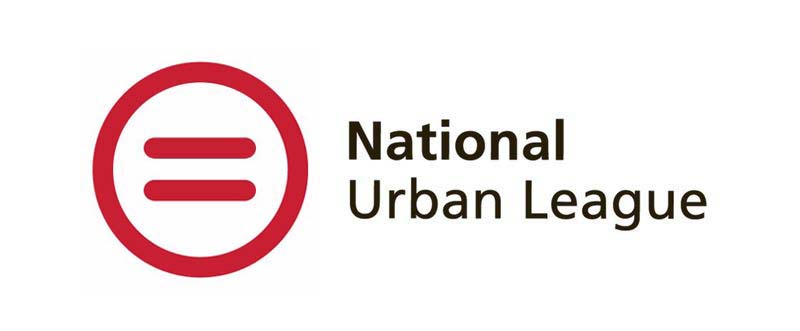Recent research has suggested Gen Z is the most entrepreneurial generation ever. However, data from the NACE First-Destination Survey reveals that, when tasked with what to do after college, the vast majority of the class of 2021 primarily pursued traditional employment or graduate school within six months of graduating, not entrepreneurship or freelancing.
New grads’ apparent preference for stability when choosing what to do after college lines up with college students’ increased interest in practical majors that have a greater rate of return on investment.
“I live in [Los Angeles], but … with my parents, so I wanted to make sure whatever job I got paid me at least enough so that I could save to move out,” says Shirak Avanesyan, who graduated from UCLA in September 2022 with a bachelor’s degree in anthropology and minors in linguistics and conservation biology, but currently works full-time at an entry-level job in human resources at UCLA.
“I hadn’t considered freelancing or contract work as I didn’t feel I had the skills for it,” Avanesyan adds.
Forage analyzed NACE data to highlight patterns in what the class of 2021 chose to do after college. In this analysis, we discuss:
- Career Outcomes for the Class of 2021
- Wage Gaps by Gender and Race for the Class of 2021
- Career Outcomes by Major
- Career Outcomes by School Characteristics
- How to Choose What to Do After College
Career Outcomes for the Class of 2021
NACE reported the percentages of graduates who had secured “career outcomes” (including employment, continuing education, military, or service) by December 2021.
Six months after graduation, most of the class of 2021 was employed (60.2%). A large portion (21.6%) pursued further education, and 15.7% were still seeking employment or education opportunities.
Of those who were employed, the vast majority had secured standard employment. Only 0.9% of the class of 2021 was pursuing entrepreneurship, and only 0.6% was freelancing as their primary career outcome.
“The outcomes rebounded from the lower percentages reported for the class of 2020, but still have not reached the same levels pre-Covid in terms of the career outcomes rate and full-time employment rates,” says Angelena Galbraith, a researcher with NACE who worked on the First-Destination Survey.
When collecting survey data from institutions, NACE stipulated that there should be only one primary outcome designation for each graduate. This restriction means that the survey results don’t capture freelancing and entrepreneurship activities that graduates may do while employed in a traditional job or enrolled in a graduate program.
Still, these percentages may seem low in light of recent surveys that have characterized Gen Z as particularly entrepreneurial. A 2020 Forbes article reported that 54% of Gen Z wanted to start their own company. In addition, according to a 2020 study from WP Engine, 62% of Gen Z indicated they had started or intend to start their own business.
According to the Bureau of Labor Statistics, only 2% of employed people between 16 and 24 years old were self-employed, unincorporated, and unpaid family workers in July 2022.
Why Traditional Career Paths Still Dominate (At Least on Paper)
NACE has consistently reported low rates of entrepreneurship and freelancing among recent graduates in the past several years of the First-Destination Survey. Six months after the class of 2020 graduated, during a period of increased entrepreneurship in the U.S., NACE reported that only 0.8% of these graduates pursued entrepreneurship and 0.6% pursued freelancing as their primary outcome. A year earlier, 0.9% of the class of 2019 was an entrepreneur, and 0.8% was freelancing.
“The biggest challenge with entrepreneurship isn’t necessarily the grit or determination to be successful,” says Amrit Ahluwalia, senior director of strategic insights at Modern Campus. “Instead, it’s having access to the business education necessary to be able to successfully identify market opportunities and create a viable business around it.”
New grads curious about freelance work or entrepreneurship may be working formal jobs in order to get the experience to understand how to run their own business in the future, he says.
“To drive more entrepreneurialism, higher education institutions could do more to help train folks to both have the technical skills to master a field and the durable skills to operate a business,” Ahluwalia says. “For example, in HVAC repair programs or carpentry programs, there could be microcredentials available for students to learn accounting and finance best practices.”
Wage Gaps by Gender and Race for the Class of 2021
Members of the class of 2021 who were employed by December of that year experienced notable pay disparities across gender and race, NACE found.
The median starting salary for male graduates ($61,760) was much higher than the median starting salaries for women ($51,088) and non-binary graduates ($43,818).
These discrepancies are similar to discrepancies experienced by the class of 2020. For that class, the median male starting salary was $62,391, the median female starting salary was $51,603, and the median non-binary starting salary was $42,136.
Asian American graduates had the highest median salary of all reported racial/ethnic groups among graduates of the class of 2021 ($70,176). African Americans had the lowest ($47,751).
A year earlier, Asian Americans from the class of 2020 also had the highest median salary of all reported racial/ethnic groups, while Native Americans had the lowest.
“There are multiple factors influencing pay,” says Laura Mills, head of early career insights at Forage. “Occupation and geography play a large role.”
Unconscious bias on the part of college faculty is a potential contributing factor as well, Mills says. For example, faculty may encourage women toward lower-paying fields and men toward higher-paying ones.
“Addressing this bias openly and training teachers and faculty to overcome these biases is an important step in making change,” Mills says.
Increased pay for care work and increased pay transparency would also help to close the wage gap, according to Mills.
“Generation Z has brought a level of pay transparency that is unprecedented,” Mills says. “I hope to see pay transparency proliferate across the country because I think it is a key to wage equity.”
Career Outcomes by Major
The majors with the highest percentage of graduates employed overall within six months of graduating were mostly technical and business-related disciplines. These include engineering, business, and computer science.
Among all of the majors NACE examined, the humanities, sciences, and social sciences had the highest incidences of graduates continuing their education.
Graduates who majored in physical sciences; biological and biomedical sciences; public administration and social services professions; parks, recreation, leisure, and fitness studies; and philosophy and religious studies were most likely to be continuing their education within six months of graduating.
The majors with the smallest percentage of graduates continuing their education were largely in technical fields and trades.
The majors with the highest percentages of freelancers among the class of 2021 were in the arts and communications fields. However, even among graduates who majored in these subjects, less than one percent were freelancing as their primary career outcome six months after graduation.
For example, just over 0.5% of graduates who majored in communications technologies and visual and performing arts were primarily freelancers in this time period.
Similarly, for the majors with the highest incidence of graduates who were entrepreneurs six months after graduating, less than one percent of graduates in those fields were entrepreneurs.
>>MORE:The Most In-Demand Jobs in an Uncertain Economy
Career Outcomes by School Characteristics
Graduating from a private school, having a small graduating class, and attending a school in the Northeast or Mid-Atlantic were associated with higher rates of career outcomes six months after graduation, NACE found.
For instance, 92.4% of private school graduates of the class of 2021 had secured a career outcome six months after graduation, substantially more than public school graduates (79.6%).
This is a long-term trend, according to Galbraith. Private school graduates have outpaced public school graduates in securing career outcomes in the First-Destination Survey since 2014.
Smaller graduating classes had higher incidences of graduates securing career outcomes within six months of graduation. Specifically, 92.2% of graduates in the class of 2021 whose class size was 2,000 students or fewer were employed, continuing their education, or pursuing military or service opportunities by that time. For graduates from classes of 20,000 or more students, it was 80.6%.
Students graduating from schools in New England (93.2%) and the Mid-Atlantic (90.5%) had the highest percentages of career outcomes of all the regions.
The Southwest (75.2%) and Far West regions (75.3%) had the lowest career outcomes rates.
MORE: See the regions with the best employee benefits.
How to Choose What to Do After College
College graduates, past and present, admit that the path from the classroom to their ideal workplace isn’t always a straight line.
Megan Zuckerman, for instance, graduated from Fordham University in December 2015 with a major in communications and media studies. She is now a public relations and events manager at IvyWise. She recommends looking for a full-time post-graduate internship if you can’t find a permanent role after graduation in your desired field.
After graduating, Zuckerman interned in the brand communications department at Time, Inc. (now known as Dotdash Meredith).
“It was an amazing stepping stone for me,” she says. “I developed a lot of new skills and was exposed to new responsibilities and tasks, while still having the flexibility to interview for permanent roles and have my supervisors be references for me, as they knew that I was actively job searching.”
>>MORE: How to Find Internships That’ll Jumpstart Your Career
Sebastian Jania graduated from the University of Waterloo in 2018 with a bachelor’s of science in kinesiology. When choosing what to do after college, Jania knew he didn’t want to pursue further education or a career in health sciences, which is what many of his peers from college were doing. During his first year after college, he worked at a factory, then taught English online, then lived in Malaga, Spain.
During this time abroad, he signed up for real estate training, and today he operates a real estate business.
“My biggest advice for students about to graduate is to make sure to spend a lot of time around those that are living the life you want to live,” Jania says. He recommends shadowing an expert in your desired field. Understanding what the day-to-day looks like may energize you to pursue the career path further, or it may help you realize that it’s not the career for you.
“There is no use working in a career if it isn’t your passion, doesn’t provide you the lifestyle you desire, and doesn’t push you to be the best version of yourself,” Jania says.
Social media can create the illusion that everyone else has their lives figured out. New grads should remember that if they’re unsure what to do next, they’re not alone, Jania says.
“What you’ll find is that most people don’t know what they want to do, are doing what they believe they ‘should’ be doing, or they may even change their minds once they spend time in their graduating field,” he says.
Switching fields can be intimidating, but the skills you developed for your degree may be transferable to other disciplines.
“None of the content I learned [for my degree] is relevant to my current job,” says Avanesyan, the anthropology major who now works in human resources. “However, the analytical skills, reading comprehension skills, critical thinking, and research skills I learned during my time at UCLA do come in handy.”
Image credit: Depositphotos.com

